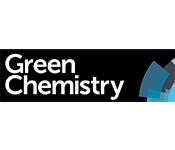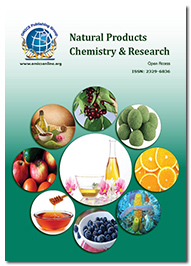Theme: Emphasis on Emerging Global Trends in the Direction of Sustainability and Environmental Safety
Green Chemistry 2016
Scientific Program Day 1 | Scientific Program Day 2 | Scientific Program Day 3
ConferenceSeries LLC Ltd invites all the participants from all over the world to attend “3rd International Conference on Past and Present Research Systems of Green Chemistry” during September 19-21, 2016 in Las Vegas, USA. This includes prompt keynote presentations, Oral talks, Poster presentations and Exhibitions.
Green Chemistry Conference will be a multidisciplinary gathering and present major areas such as Green Catalysis, Green Chemistry Applications, Green Synthesis and Designing, Green Nanotechnology, Green Chemical Solvents, Analytical Methodologies, Green Nanotechnology, Organo catalysis, Ionic liquids, Green engineering, Renewable energy and many more. The forum of Scientists, students and researchers from all corners of the globe, come together to discuss future science. Each session of the meeting will be included with expert lectures, poster and discussions, join us to design sustainable development processes, innovations by which and how these strategies drive new policies, advances the business and human health protection. We are glad to invite you on behalf of organizing committee to join us, where you are the decision maker for future. ConferenceSeries LLC Ltd Organizes 1000+ Conferences Every Year across USA, Europe & Asia with support from 1000 more scientific societies and Publishes 700+ Open access Journals which contains over 30000 eminent personalities, reputed scientists as editorial board members. To know more about the conference series LLC Ltd visit: http://www.conferenceseries.com/
Track 1: Green Catalysts
Catalysts can be divided into two main types - heterogeneous and homogeneous. In a heterogeneous reaction, the catalyst is in a different phase from the reactants. In a homogeneous reaction, the catalyst is in the same phase as the reactants.
You might wonder why phase differs from the term physical state (solid, liquid or gas). It includes solids, liquids and gases, but is actually a bit more general. It can also apply to two liquids (oil and water, for example) which don't dissolve in each other. You could see the boundary between the two liquids.
Heterogeneous catalysis: This involves the use of a catalyst in a different phase from the reactants. Typical examples involve a solid catalyst with the reactants as either liquids or gases.
Homogeneous catalysis: This has the catalyst in the same phase as the reactants. Typically everything will be present as a gas or contained in a single liquid phase.
Related Conferences: European Chemistry Congress, June 16-18, 2016, Italy; World Chemistry Conference, August 08-10, 2016, Canada; Conference on Chemical Engineering, September 12-14, 2016, USA; 2nd Green Energy Conference and Expo, November 28-30, 2016, USA; Conference on Polymer Science and Engineering, August 22-24, 2016, USA; 6th Environmental Chemistry Confernence, March 02-03, 2017, Chisinau, Republic of Moldova, Europe; Symposium on Catalysis and Sustainable Chemistry, Sep 07-09, 2016 at Madrid, Spain; American Chemical Society (ACS), Royal Society of Chemistry (RSC), The Israel Chemical Society, Canadian Green Chemistry and Engineering Network (CGCEN), EcoDesign Resource Society, United States Environmental Protection Agency (USEPA), Green and Sustainable Chemistry Network, Japan (GSCN), Lombardy Green Chemistry Association (LGCA)
Track 2: Green Chemistry Applications
In 2005, the Nobel Prize in chemistry was awarded for the discovery of a catalytic chemical process called metathesis – which has broad applicability in the chemical industry. It uses significantly less energy and has the potential to reduce greenhouse gas emissions for many key processes. The process is stable at normal temperatures and pressures, can be used in combination with greener solvents, and is likely to produce less hazardous waste.
In 2012, Elevance Renewable Sciences won the Presidential Green Chemistry Challenge Award by using metathesis to break down natural oils and recombine the fragments into high-performance chemicals. The company makes specialty chemicals for many uses, such as highly concentrated cold-water detergents that provide better cleaning with reduced energy costs.
- Industrial processes
- Materials and applications
- Basic chemicals
- Polymers
- Metals
- Antibacterial Products
- Laundry
- Water Purification
- Industrial Cleaning
Related Conferences: Conference on Organic Chemistry, August 11-13, 2016, USA; World Chemistry Conference, August 08-10, 2016, Canada; Conference on Polymer Chemistry, November 14-16 2016, USA; Conference on Chemical Engineering, September 12-14, 2016, USA; European Chemistry Congress, June 16-18 2016, Italy; 6th Conference Environmental Chemistry March 02-03, 2017 at Chisinau, Republic of Moldova, Europe; Symposium on Catalysis and Sustainable Chemistry, Sep 07-09 2016 at Madrid, Spain; American Chemical Society (ACS), Royal Society of Chemistry (RSC), The Israel Chemical Society, Canadian Green Chemistry and Engineering Network (CGCEN), EcoDesign Resource Society
Track 3: Green Synthesis-Designing the Starting Materials
There is currently considerable interest in applying the principles of green chemistry and sustainability to industrial organic synthesis, particularly in the fine chemicals and pharmaceuticals industries.
In any synthesis of a target molecule, the starting materials that are made to react with a reagent under appropriate conditions. Before coming to a final decision, consider all the possible methods that can give the desired product. The same product can also be obtained by modifying the conditions. The method of choice should not use toxic starting materials and should eliminate by-products and wastes. Following are some of the important considerations.
Related Conferences: European Chemistry Congress, June 16-18, 2016, Italy; Conference on Organic Chemistry, August 11-13, 2016, USA; World Chemistry Conference, August 08-10 2016, Canada; 6th Conference on Environmental Chemistry March 02-03, 2017 at Chisinau, Republic of Moldova, Europe; Symposium on Catalysis and Sustainable Chemistry, Sep 07-09, 2016 at Madrid, Spain; Green and Sustainable Chemistry Network, Japan (GSCN), Lombardy Green Chemistry Association (LGCA), New England Green Chemistry Consortium (NEGCC), The Chemical Society of Thailand (CST), Association of Chemistry and the Environment (ACE), Louisiana Chemical Association(LCA), International Fragrance Association(IFRA)
Track 4: New Trends in Green Chemistry
Sustainable and Green Chemistry in very simple terms is just a different way of thinking about how chemistry and chemical engineering can be done. Over the years different principles have been proposed that can be used when thinking about the design, development and implementation of chemical products and processes. These principles enable scientists and engineers to protect and benefit the economy, people and the planet by finding creative and innovative ways to reduce waste, conserve energy, and discover replacements for hazardous substances.
Green chemistry can also be defined through the use of metrics. While a unified set of metrics has not been established, many ways to quantify greener processes and products have been proposed. These metrics include ones for mass, energy, hazardous substance reduction or elimination, and life cycle environmental impacts.
“Green Chemistry is the utilization of a set of principles that reduces or eliminates the use or generation of hazardous substances in the design, manufacture and applications of chemical products”.
Principles of Green Chemistry:
1. Prevention
2. Atom Economy
3. Less Hazardous Chemical Syntheses
4. Designing Safer Chemicals
5. Safer Solvents and Auxiliaries
6. Design for Energy Efficiency
7. Use of Renewable Feedstock’s
8. Reduce Derivatives
9. Catalysis
10. Design for Degradation
11. Real-time analysis for Pollution Prevention
12. Inherently Safer Chemistry for Accident Prevention
Related Conferences: European Chemistry Congress, June 16-18, 2016, Italy; Conference on Organic Chemistry, August 11-13 2016, USA; World Chemistry Conference August 08-10, 2016, Canada; 2nd Conference on Green Energy and Expo, November 28-30 2016, USA; Conference on Polymer Chemistry, November 14-16 2016, USA; 11th Green Energy Conference, May 8-11, 2016, USA; 24th European Biomass Conference and Exhibition, June 6-9 2016, Netherlands; ICGC 2016: 18th Conference on Green Chemistry, June 9-10 2016, USA, 20th Annual Green Chemistry Conference, June 14-16 2016, Portland, Conference on Renewable Energy August 15–17, 2016, Egypt, American Chemical Society (ACS), Royal Society of Chemistry (RSC), The Israel Chemical Society, Canadian Green Chemistry and Engineering Network (CGCEN), EcoDesign Resource Society, United States Environmental Protection Agency (USEPA), Green and Sustainable Chemistry Network, Japan (GSCN), Lombardy Green Chemistry Association (LGCA)
Track 5: Green Chemical Solvents
The use of hazardous and toxic solvents in chemical laboratories and the chemical industry is considered a very important problem for the health and safety of workers and environmental pollution. Green Chemistry aims to change the use of toxic solvents with greener alternatives, with replacement and synthetic techniques, separation and purification which do not need the use of solvents.
One of principles of Green Chemistry is to promote the idea of “greener” solvents (non-toxic, benign to environment), replacement in cases that can be substituted with safer alternatives, or changes in the methodologies of organic synthesis, when solvents are not needed.
Related Conferences: 2nd Congress on Biofuels and Bioenergy, August 25-27, 2016, Brazil; 2nd World Congress on Biopolymers, August 04-06, 2016 UK; Conference on Chemical Engineering, September 12-14 2016, USA; Conference on Polymer Science and Engineering, August 22-24 2016, USA; 3rd Conference on Biopolymers and Bioplastics, September 12-14 2016, USA; 6th IUPAC Conference on Green Chemistry, Sep 4-8, 2016, Italy, 2nd Conference on Energy Production and Management in the 21st Century, Sep 6-8, 2016, Italy, Conference on Sustainable Water Processing, September 11-14, 2016, Spain, 5th Renewable Power Generation Conference, September 21-23, 2016, UK, Green Urbanism, October 14–16 2016, Italy, American Chemical Society (ACS), Royal Society of Chemistry (RSC), The Israel Chemical Society, Canadian Green Chemistry and Engineering Network (CGCEN), EcoDesign Resource Society, United States Environmental Protection Agency (USEPA)
Track 6: Green Metrics and Measurements
Quantifying the environmental impact of chemical technologies and products, and comparing alternative products and technologies in terms of their “greenness” is a challenging task. In order to characterize various aspects of a complex phenomenon, a number of different indicators are selected into a metric. Green Chemistry conference outlines fundamental developments in chemistry and chemical technology that have led to the development of green chemistry, green chemical technology, and sustainable chemical technology concepts, and provide a foundation for the development of the corresponding metrics. It includes different approaches to metrics, and case study examples of their applications, and problems in practice.
Related Conferences: Conference on Organic Chemistry, August 11-13 2016, USA; World Chemistry Conference, August 08-10 2016, Canada; 2nd Conference on Green Energy and Expo, November 28-30, 2016, USA; Conference on Polymer Science and Engineering, August 22-24 2016, USA; 3rd Conference Biopolymers and Bioplastics, September 12-14 2016, USA; 7th Green Energy Conference, November 27-29 2016, Israel; Conference on Improving Sustainability December 02-04, 2016, 6th Conference on Environmental Chemistry March 02-03, 2017 at Chisinau, Republic of Moldova, Europe; Symposium on Catalysis and Sustainable Chemistry, Sep 07-09 2016 at Madrid, Spain; American Chemical Society (ACS), Royal Society of Chemistry (RSC), The Israel Chemical Society, Canadian Green Chemistry and Engineering Network (CGCEN), EcoDesign Resource Society, United States Environmental Protection Agency (USEPA)
Track 7: New Ideas for Non Toxic By-Products
Clean technology includes recycling, renewable energy (wind power, solar power, biomass, hydropower, biofuels, etc.), information technology, green transportation, electric motors, green chemistry, lighting, Greywater, and many other appliances that are now more energy efficient. It is a means to create electricity and fuels, with a smaller environmental footprint and minimize pollution to make green buildings, transport and infrastructure both more energy efficient and environmentally benign. Environmental finance is methods by which new clean technology projects that have proven that they are "additional" or "beyond business as usual" can obtain financing through the generation of carbon credits. A project that is developed with concern for climate change mitigation (such as a Kyoto Clean Development Mechanism project) is also known as a carbon project.
Related Conferences: 2nd Congress on Biofuels and Bioenergy, August 25-27 2016, Brazil; 2nd World Congress on Biopolymers, August 04-06 2016, UK; Conference on Chemical Engineering, September 12-14 2016, USA; 6th Conference on Environmental Chemistry 2017, 02 - 03 March 02-03, 2017 at Chisinau, Republic of Moldova, Europe; Symposium on Catalysis and Sustainable Chemistry, Sep 07-09 2016 at Madrid, Spain; Green and Sustainable Chemistry Network, Japan (GSCN), Lombardy Green Chemistry Association (LGCA), New England Green Chemistry Consortium (NEGCC), The Chemical Society of Thailand (CST), Association of Chemistry and the Environment (ACE), Louisiana Chemical Association(LCA)
Track 8: Organic Synthesis Based on Multiphase Operation
Organic synthesis is a special branch of chemical synthesis and is concerned with the construction of organic compounds via organic reactions. Organic molecules often contain a higher level of complexity than purely inorganic compounds, so that the synthesis of organic compounds has developed into one of the most important branches of organic chemistry. There are several main areas of research within the general area of organic synthesis: total synthesis, semi synthesis, and methodology.
A total synthesis is the complete chemical synthesis of complex organic molecules from simple, commercially available (petrochemical) or natural precursors. Total synthesis may be accomplished either via a linear or convergent approach. In a linear synthesis often adequate for simple structures several steps are performed one after another until the molecule is complete. The chemical compounds made in each step are called synthetic intermediates. For more complex molecules, a different approach may be preferable: convergent synthesis involves the individual preparation of several "pieces" (key intermediates), which are then combined to form the desired product.
Related Conferences: Conference on Organic Chemistry, August 11-13 2016, USA; World Chemistry Conference, August 08-10 2016, Canada; Conference on Polymer Chemistry, November 14-16 2016, USA; Conference on Chemical Engineering, September 12-14, 2016, USA; European Chemistry Congress, June 16-18 2016, Italy; ICRES 2016; Green and Sustainable Chemistry Conference, April 4-6 2016, Germany, American Chemical Society (ACS), Royal Society of Chemistry (RSC), The Israel Chemical Society, Canadian Green Chemistry and Engineering Network (CGCEN), EcoDesign Resource Society
Track 9: Industrial Applications of Green Chemistry
In the past, the industrial production of Adipic acid used benzene as a starting material. Benzene is one of the basic chemicals for industrial reactions and a solvent. It is known that derives mainly from the refining processes of the petrochemical industry. Benzene is also known for its carcinogenic properties (it causes leukemia to highly exposed workers). Afterwards the starting material became cyclohexanone or a mixture of cyclohexanone and cyclohexanol. For the oxidation process it was used nitric acid, producing toxic fumes of nitric oxides, NOx, which are also contributors to the greenhouse effect and the destruction of the ozone layer in the stratosphere. It was Inevitable that the method had to be changed again with more environmentally benign reactions.
Related Conferences: Conference on Chemical Engineering, September 12-14 2016, USA; Conference on Materials Chemistry, March 31-April 01 2016, Spain; European Chemistry Congress, June 16-18 2016, Italy; Conference on Organic Chemistry, August 11-13 2016, USA; World Chemistry Conference, August 08-10, 2016, Canada; GCC Environment Forum, April 18-20 2016, UAE; Conference Green Chemistry and Engineering, April 21-23 2016, UAE; 11th Green Energy Conference, May 8-11 2016, USA; 24th European Biomass Conference and Exhibition, June 6-9 2016, Netherlands; ICGC 2016: 18th Conference on Green Chemistry, June 9-10 2016, USA, American Chemical Society (ACS), Royal Society of Chemistry (RSC), The Israel Chemical Society, Canadian Green Chemistry and Engineering Network (CGCEN), EcoDesign Resource Society, United States Environmental Protection Agency (USEPA)
Track 10: Analytical Methodologies
An analytical method or analytical technique is a method to determine the concentration of a chemical compound or element in a sample. There is a very wide variety of methods used for analysis which afford different degrees of sample preparation and instrumentation.
Related Conferences: 2nd Conference on Green Energy and Expo, November 28-30 2016, USA; Conference on Polymer Science and Engineering, August 22-24, 2016, USA, 3rd Conference on Biopolymers and Bioplastics, September 12-14 2016, USA, Conference on Polymer Chemistry, November 14-16 2016, USA, 2nd Congress on Biofuels and Bioenergy, August 25-27 2016, Brazil; 20th Annual Green Chemistry and Conference, June 14-16 2016, Portland; Conference on Renewable Energy, August 15–17 2016, Egypt; 6th IUPAC Conference on Green Chemistry, September 4-8 2016, Italy; 2nd Conference on Energy Production and Management in the 21st Century, September 6 - 8 2016, Italy; Conference on Sustainable Water Processing, September 11-14 2016, Spain, New England Green Chemistry Consortium (NEGCC), The Chemical Society of Thailand (CST), Association of Chemistry and the Environment (ACE), Louisiana Chemical Association(LCA), International Fragrance Association(IFRA)
Track 11: Sustainability and Environmental Safety
At the global scale and in the broadest sense sustainability and environmental safety management involves managing the oceans, freshwater systems, land and atmosphere, according to sustainability principles.
Land use change is fundamental to the operations of the biosphere because alterations in the relative proportions of land dedicated to urbanization, agriculture, forest, woodland, grassland and pasture have a marked effect on the global water, carbon and nitrogen biogeochemical cycles. Management of the Earth's atmosphere involves assessment of all aspects of the carbon cycle to identify opportunities to address human-induced climate change and this has become a major focus of scientific research because of the potential catastrophic effects on biodiversity and human communities. Ocean circulation patterns have a strong influence on climate and weather and, in turn, the food supply of both humans and other organisms.
Related Conferences: 2nd Conference on Green Energy and Expo, November 28-30, 2016, USA; 2nd Congress on Biofuels and Bioenergy, August 25-27, 2016, Brazil, 2nd World Congress on Biopolymers, August 04-06, 2016 UK, Conference on Materials Chemistry, March 31-April 01, 2016, Spain, Conference on Polymer Chemistry, November 14-16, 2016 USA; 5th Renewable Power Generation Conference, September 21-23, 2016, UK; Green Urbanism, October 14–16 2016, Italy; 7th Conference on Green Energy, November 27-29, 2016, Israel; Conference on Improving Sustainability Concept in Developing Countries, December 02-04, 2016, Egypt; American Chemical Society (ACS), Royal Society of Chemistry (RSC), The Israel Chemical Society, Canadian Green Chemistry and Engineering Network (CGCEN), EcoDesign Resource Society, United States Environmental Protection Agency (USEPA), Green and Sustainable Chemistry Network, Japan (GSCN), Lombardy Green Chemistry Association (LGCA)
Track 12: Green Chemistry and Engineering
Green engineering approaches the design of products and processes by applying financially and technologically feasible processes and products in a manner that simultaneously decreases the amount of pollution that is generated by a source, minimizes exposures to potential hazards (including reducing toxicity and improved uses of matter and energy throughout the life cycle of the product and processes). In so doing, the overall health and ecological stress and risk are reduced. As such, green engineering is not actually an engineering discipline in itself, but an overarching engineering framework for all design disciplines.
Related Conferences: European Chemistry Congress, June 16-18 2016, Italy; Conference on Organic Chemistry, August 11-13, 2016 USA; World Chemistry Conference, August 08-10 2016, Canada; 2nd Conference on Green Energy and Expo, November 28-30 2016, USA; Conference on Polymer Science and Engineering, August 22-24 2016, USA; 6th Conference on Environmental Chemistry March 02-03, 2017 at Chisinau, Republic of Moldova, Europe; Symposium on Catalysis and Sustainable Chemistry, Sep 07-09, 2016 at Madrid, Spain; American Chemical Society (ACS), Royal Society of Chemistry (RSC), The Israel Chemical Society, Canadian Green Chemistry and Engineering Network (CGCEN), EcoDesign Resource Society, United States Environmental Protection Agency (USEPA), Green and Sustainable Chemistry Network, Japan (GSCN), Lombardy Green Chemistry Association (LGCA)
Track 13: Green Nanotechnology
Green nanotechnology refers to the utilization of nanotechnology to upgrade the ecological supportability of procedures delivering negative externalities. It additionally alludes to the utilization of the results of nanotechnology to improve manageability. It incorporates making green nano-items and utilizing nano-items as a part of backing of maintainability.
Green nanotechnology has been portrayed as the advancement of clean advances, "to minimize potential natural and human wellbeing dangers connected with the assembling and utilization of nanotechnology items, and to support supplanting of existing items with new nano-items that are all the more ecologically agreeable all through their lifecycle.
Related Conference: 13th Conference on Nanotek and Expo, December 05-07, 2016 Phoenix, Arizona, USA; World Chemistry Conference, August 08-10, 2016, Canada; Conference on Polymer Chemistry, November 14-16 2016, USA; Conference on Chemical Engineering, September 12-14 2016, USA; European Chemistry Congress, June 16-18 2016, Italy; 6th Conference on Environmental Chemistry March 02-03, 2017 at Chisinau, Republic of Moldova, Europe; Symposium on Catalysis for Clean Energy and Sustainable Chemistry, Sep 07-09, 2016 at Madrid, Spain; American Chemical Society (ACS), Royal Society of Chemistry (RSC),The Israel Chemical Society, Canadian Green Chemistry and Engineering Network (CGCEN), EcoDesign Resource Society
Track 14: Green Materials and Marketing
Green marketing is the showcasing of items that are dared to be naturally desirable over others. Thus green marketing joins an expansive scope of exercises, including item adjustment, changes to the generation process, economical bundling, and in addition altering publicizing. Yet characterizing green promoting is not a straightforward assignment where a few implications cross and repudiate one another; a sample of this will be the presence of shifting social, natural and retail definitions appended to this term. Other comparable terms utilized are ecological advertising and environmental showcasing.
Green, ecological and eco-marketing are a piece of the new advertising methodologies which don't simply refocus, modify or upgrade existing promoting thinking and practice, however try to challenge those methodologies and give a generously alternate point of view. In more detail green, natural and eco-marketing have a place with the gathering of methodologies which look to address the absence of fit between promoting as it is as of now drilled and the biological and social substances of the more extensive advertising environment.
Related Conferences: 3rd Conference Biopolymers and Bioplastics, September 12-14 2016 at USA; Conference Polymer Chemistry, November 14-16 2016 at USA; 2nd Congress on Biofuels and Bioenergy, August 25-27, 2016, Brazil; 2nd World Congress on Biopolymers, August 04-06, 2016, UK; Conference on Chemical Engineering, September 12-14, 2016, USA; 6th Conference on Environmental Chemistry March 02-03, 2017 at Chisinau, Republic of Moldova, Europe; Symposium on Sustainable Chemistry, Sep 07-09, 2016 at Madrid, Spain; Sustainable Energy and Technology 2016, March 23-25 2016,Thailand, New England Green Chemistry Consortium (NEGCC), The Chemical Society of Thailand (CST), Association of Chemistry and the Environment (ACE), Louisiana Chemical Association(LCA), International Fragrance Association(IFRA)
Conference Series LLC Ltd invites all the participants from all over the world to attend “3rd International Conference on Past and Present Research Systems of Green Chemistry” during September 19-21, 2016 in Las Vegas, USA. This includes prompt keynote presentations, Oral talks, Poster presentations and Exhibitions.
The scientific program and workshops will focus on current advances in the research and use of Green Chemistry with the whole concept of this advanced technology is to agendize from past, analyze the present and implement for the future the latest innovative evolving theories and technologies to surpass the hurdles and make modish frontiers. Conference Series LLC Ltd Organizes 1000+ Conferences Every Year across USA, Europe & Asia with support from 1000 more scientific societies and Publishes 700+ Open access Journals which contains over 30000 eminent personalities, reputed scientists as editorial board members. To know more about the Conference Series LLC Ltd visit: http://www.conferenceseries.com/
Green Chemistry Conference will be a multidisciplinary gathering and present major areas such as green synthesis, green catalysis, education and policies. The forum of Scientists, students and researchers from all corners of the globe, come together to discuss future science. Each session of the meeting will be included with expert lectures, poster and discussions, join us to design sustainable development processes, innovations by which and how these strategies drive new policies, advances the business and human health protection. We are glad to invite you on behalf of organizing committee to join us, where you are the decision maker for future.
Green Chemistry Conference purpose is to fill your head with knowledge you can use: ideas, new trends, amazing ingenuity. Our focus is on sustainable Development and Green Technologies, which we believe are foundational to the success of individual organizations as well as our cities, states, nations and world. Attendees come to Green Chemistry Conference to learn from experts in their community and leave.
Every year over 300 of experts representing renewable energy companies, technology and service providers, governments, investors and consultants attend our Green Chemistry Conferences.
With so much to see and do, you can't miss the excitement and energy of Green Chemistry Conference in Las Vegas, USA.
The global chemical industry is expected to grow from $4 trillion to $5.3 trillion by 2020. According to a 2011 report from Pike Research, Green Chemistry represents a market opportunity that will grow dramatically from $2.8 billion in 2011 to $98.5 billion by 2020. The same report also estimates that Green Chemistry is forecast to save industry $65.5 billion by 2020. a part of the $5.3 trillion US chemical industry.
About the Conference:
Green Chemistry 2016 takes immense pleasure to invite you all to be a part of this meeting which will focus on current trends and emerging issues in Green Chemistry. This Conference Series LLC Ltd Conference desideratum is to render an intriguing forum and vibrant opportunity for researchers to share their original research results and practical experiences, at the same time absorb knowledge from works being done around the nooks of world. Apart from researchers, professors, biopharmaceutical industry practitioners, private and public investors, and students are also most welcome to get themselves inbuilt to the rays of novel happenings on Green Chemistry around the globe. The whole concept of this advanced technology is to agenized from past, analyze the present and implement for the future the latest innovative evolving theories and technologies to surpass the hurdles and make modish frontiers.
The major objective of the conference is to emphasize the importance of Green Chemistry, explore recent advancements, and research by making room to experts and researchers from around the globe. The gathering will address sustainable developments in areas such as organic chemistry, novel methodologies in physical and applied chemistry. This event will be the best venue for academicians, researchers and interested parties to discuss proposals and most sound issues related to eco-friendly chemical processes.
For more details please visit-http://greenchemistry.conferenceseries.com/
Importance & Scope:
Green Chemistry provides a unique forum for the publication of innovative research on the development of alternative sustainable technologies. With a wide general appeal, Green Chemistry publishes urgent communications and high quality research papers as well as review articles. The scope of Green Chemistry is based on, but not limited to, the definition proposed. Green chemistry is the utilization of a set of principles that reduces or eliminates the use or generation of hazardous substances in the design, manufacture and application of chemical products. Green Chemistry is at the frontiers of this science and publishes research that attempts to reduce the environmental impact of the chemical enterprise by developing a technology base that is inherently non-toxic to living things and the environment. Green chemistry is the design of chemical products and processes that reduce or eliminate the use and generation of hazardous substances.
The meeting will be a multidisciplinary gathering and present major areas such as green synthesis, catalysis, education and policies. The forum of Scientists, students and researchers from all corners of the globe, come together to discuss future science. Each session of the meeting will be included with expert lectures, poster and discussions, join us to design sustainable processes, innovations by which and how these strategies drive new policies, advances the business and human health protection. We are glad to invite you on behalf of organizing committee to join us, where you are the decision maker for future.
Why Las Vegas?
The city is one of the top three leading destinations in the United States for conventions, business, and meetings. Las Vegas prides itself in being one of the busiest cities in America for conferences and conventions. There are several Green Chemistry Universities in USA. Mainly it includes Yale University which is the center for Green Chemistry.
Conference Highlights:
- Basic Principles and New Trends in Green Chemistry
- Green Chemistry-Chemical Applications from Laboratories to Industries
- Green Synthesis-Designing the Starting Materials
- The Role of Catalysts
- Green Chemical Solvents
- Green Metrics and Measurements
- New Paradigms for Non Toxic By-Products
- Organic Synthesis in Different States
- Industrial Applications of Green Chemistry
- Analytical Methodologies
- Sustainability and Environmental Safety
- Green Chemistry and Engineering
Why to attend???
Meet Your Target Market with three days of programming, the Green Chemistry 2016 conference will feature 52 technical sessions, a poster session, green exhibit hall, and keynotes lectures. As the longest running green chemistry conference in the United States, Green Chemistry 2016 invites scientists, decision-makers, students, and chemists to come together, compare findings, and discuss the science of the future. Share your research with an engaged audience of your peers from around the globe; learn from scientific trailblazers who are designing more sustainable chemistries and processes; find out how green innovations are inspiring new businesses and product lines.
A Unique Opportunity for Advertisers and Sponsors at this International event:
http://greenchemistry.conferenceseries.com/sponsors.php
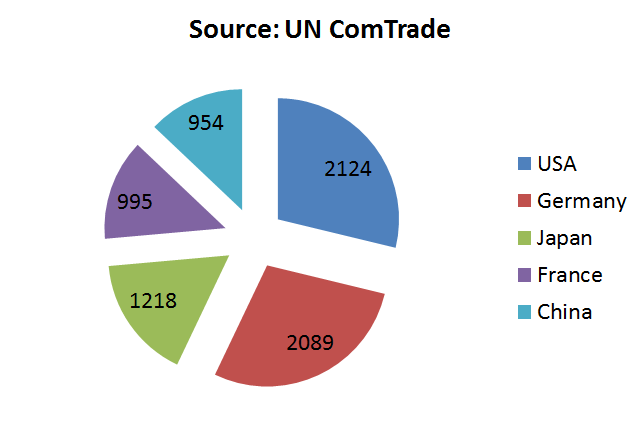
Major Marketing Associations around the Globe
- TCNJ’s Student Chemists Association
- Lombardy Green Chemistry Association
- A Sustainable Global Society
- Chemistry Society of Peru
Society of Environmental Toxicology and Chemistry (SETAC)
Major Marketing Associations in USA
- American Chemical Society (ACS)
- Royal Society of Chemistry (RSC)
Statistical Analysis of Associations and Societies
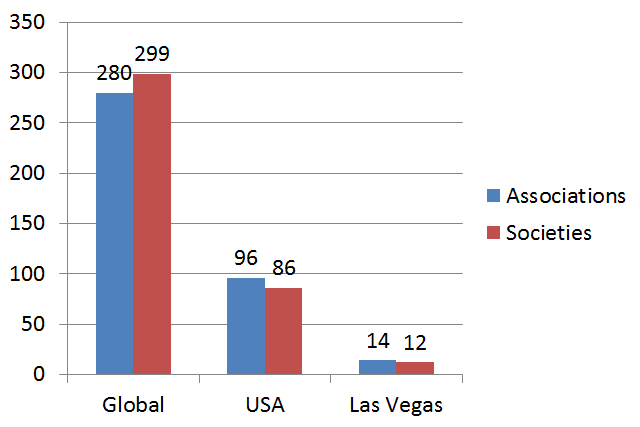
Target Audience:
The target audience is Nobel laureates, MD/Presidents, Vice Presidents, Departmental Head & Chairs. Vendors will have the opportunity to introduce the latest Green Chemistry technology to a diverse audience by becoming a conference sponsor via exhibits and/or workshops.
Target Audience:
- Industry 21%
- Student 17%
- Academia 42%
- Government 11%
- Others 9%

Top Universities in USA:
- Yale University
- Harvard University
- Stanford University
- University of Pennsylvania
- Drexel University
- Florida State University
- University of Florida
- Rice University
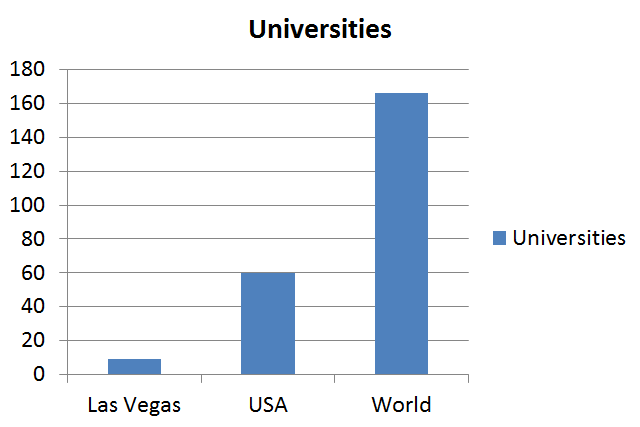
Glance at Market of Green Chemistry:
The global chemical industry is expected to grow from $4 trillion to $5.3 trillion by 2020. According to a 2011 report from Pike Research, Green Chemistry represents a market opportunity that will grow dramatically from $2.8 billion in 2011 to $98.5 billion by 2020. The same report also estimates that Green Chemistry is forecast to save industry $65.5 billion by 2020. A part of the $5.3 trillion US chemical industry.
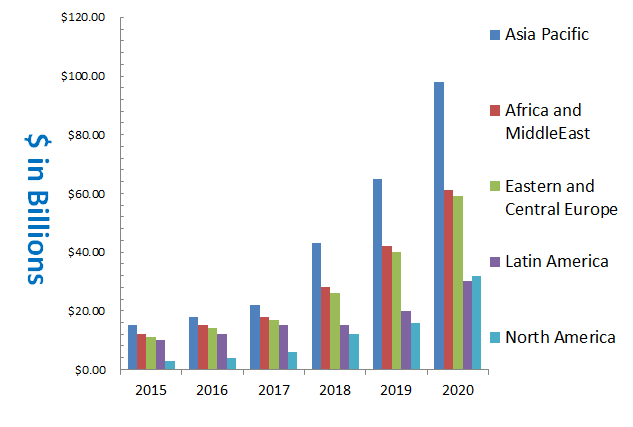
Conference Highlights
- Green Catalysis
- Green Chemistry Applications
- Green Synthesis and Designing
- New Trends in Green Chemistry
- Green Chemical Solvents
- Green Metrics and Measurements
- Non Toxic By-Products
- Organic Synthesis
- Industrial Applications of Green Chemistry
- Analytical Methodologies
- Sustainability and Environmental Safety
- Green Chemistry and Engineering
- Green Materials and Marketing
- Entrepreneurs Investment Meet
- Green Nanotechnology
To share your views and research, please click here to register for the Conference.
To Collaborate Scientific Professionals around the World
| Conference Date | September 19-21, 2016 | ||
| Sponsors & Exhibitors |
|
||
| Speaker Opportunity Closed | Day 1 | Day 2 | Day 3 |
| Poster Opportunity Closed | Click Here to View | ||
Useful Links
Special Issues
All accepted abstracts will be published in respective Our International Journals.
Abstracts will be provided with Digital Object Identifier by



















